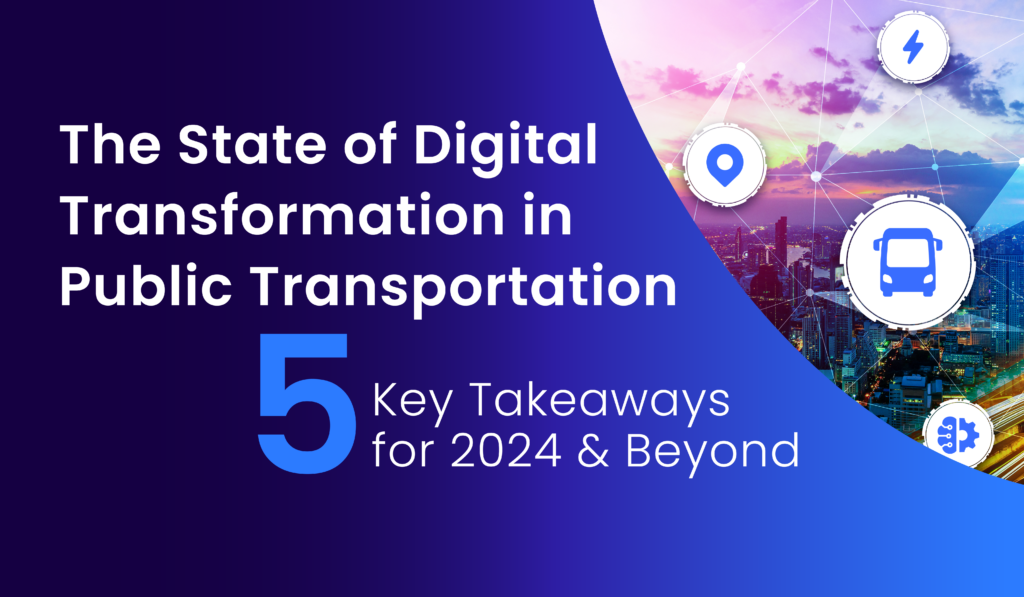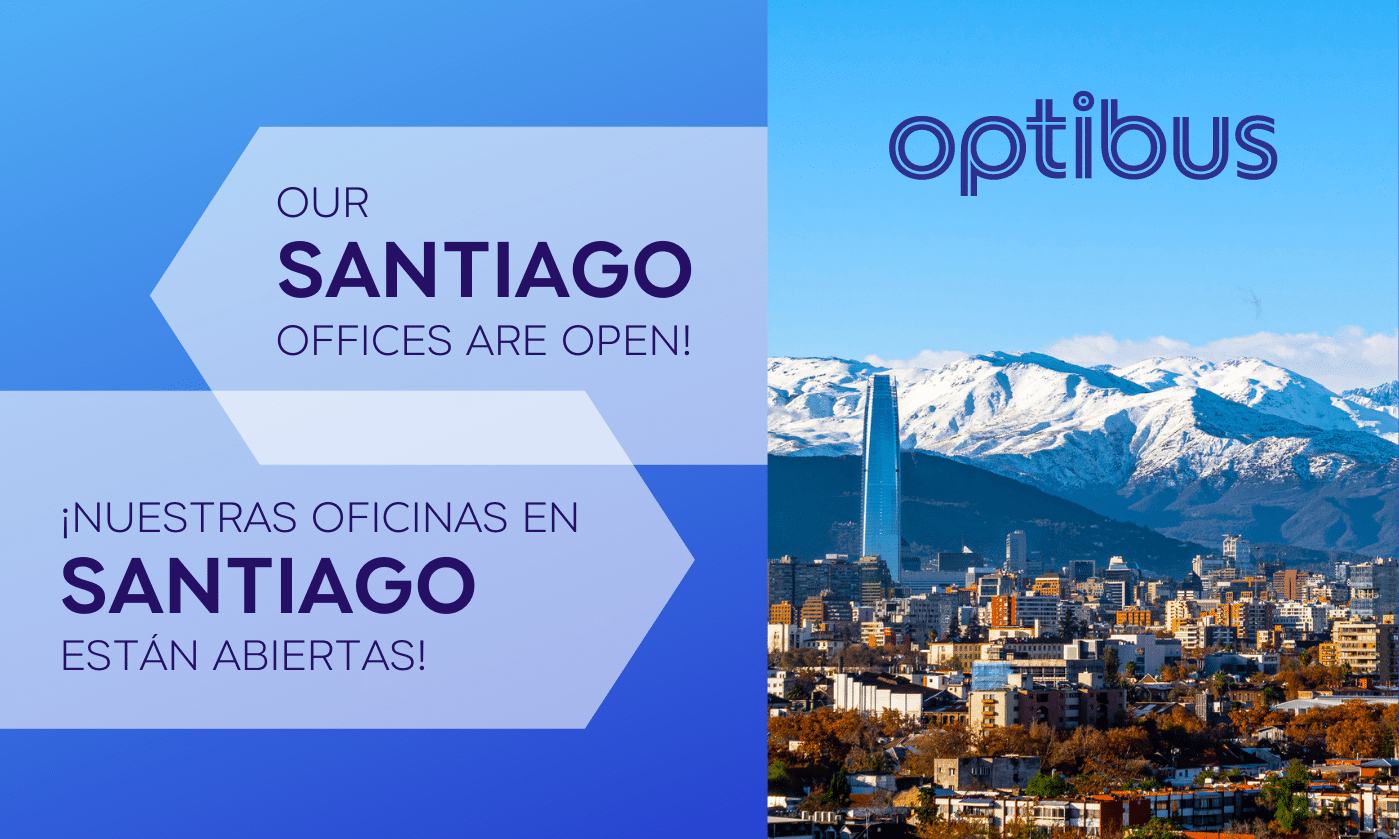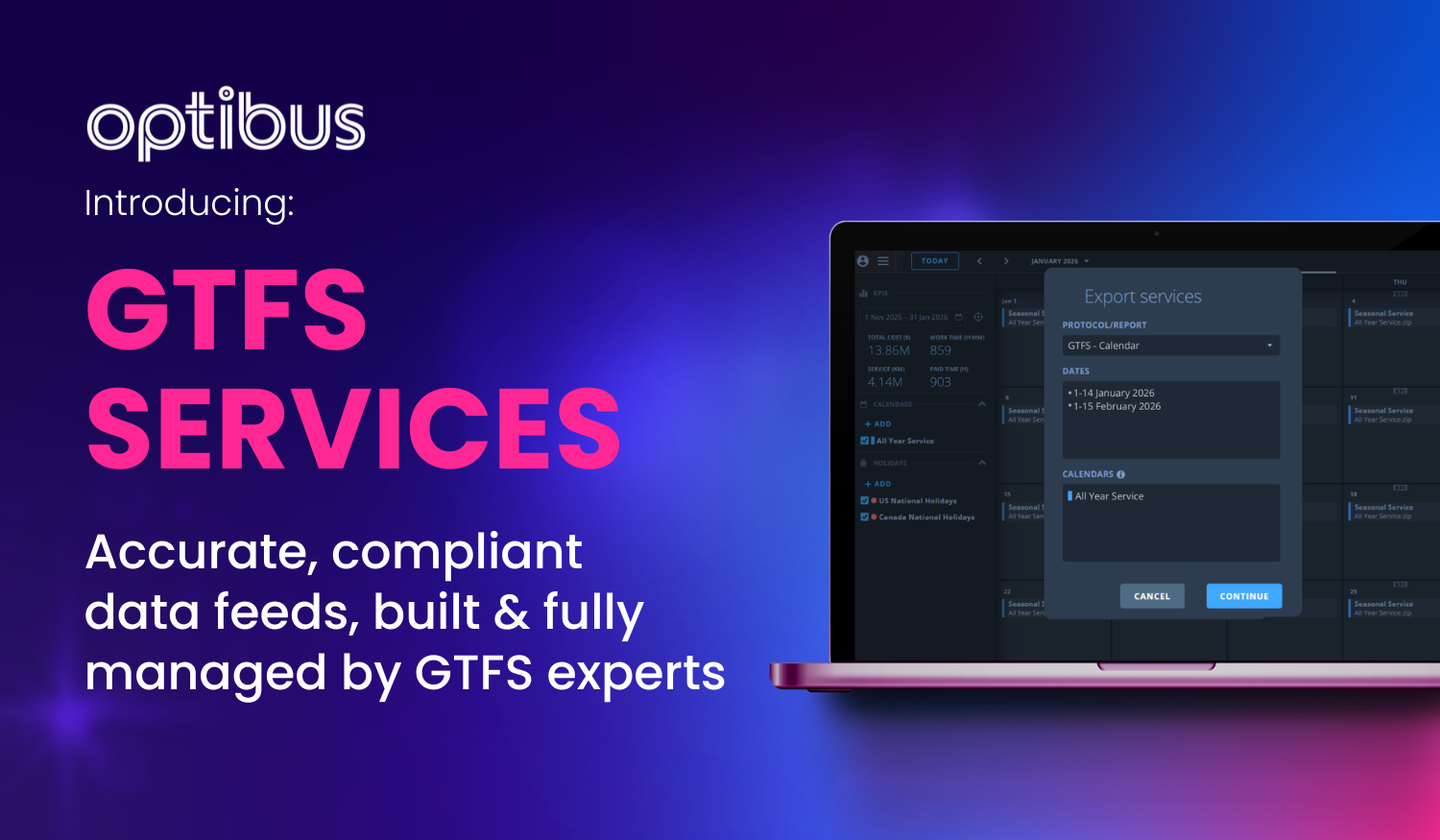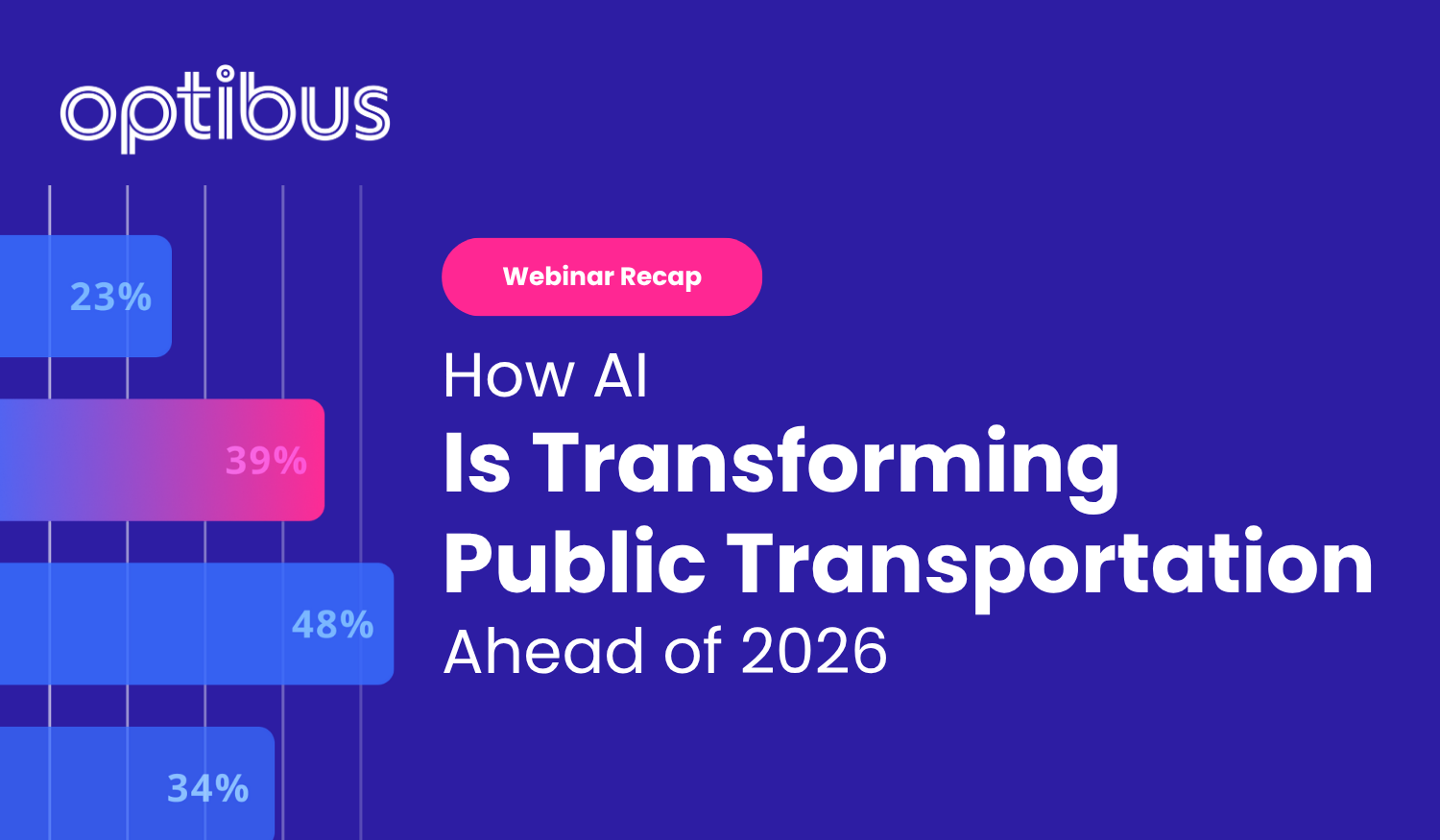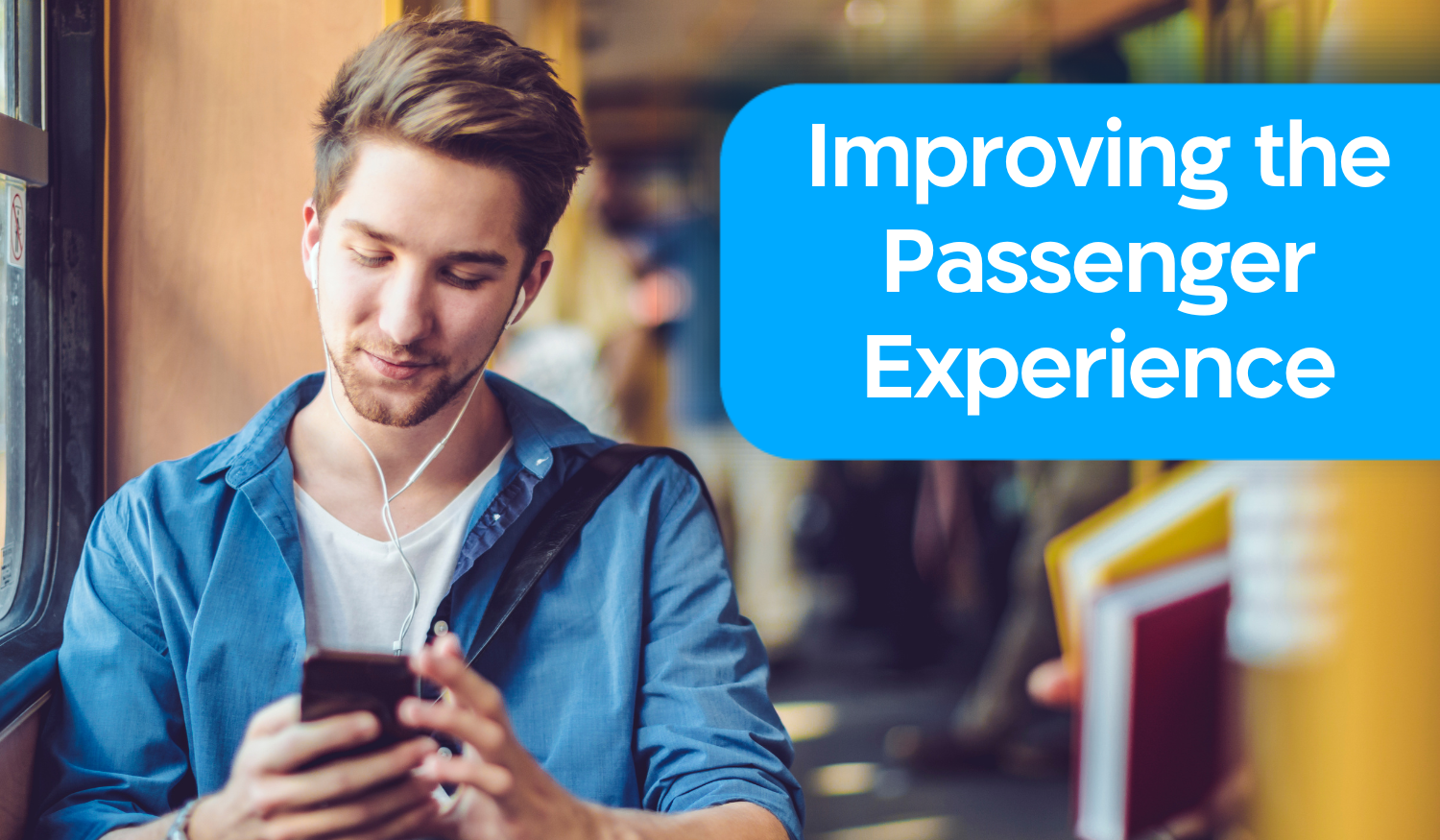-1.png?width=1500&height=875&name=Copy%20of%20BLOG%20template%20for%20website%20(2)-1.png) The public transportation landscape is evolving rapidly, and as we look toward 2025, public transportation agencies and operators face both exciting opportunities and significant challenges. During the recent webinar, How to Plan for 2025: Expert Insights for Future-Ready Public Transportation, industry leaders came together to discuss emerging trends, innovative solutions, and key strategies to prepare for the future.
The public transportation landscape is evolving rapidly, and as we look toward 2025, public transportation agencies and operators face both exciting opportunities and significant challenges. During the recent webinar, How to Plan for 2025: Expert Insights for Future-Ready Public Transportation, industry leaders came together to discuss emerging trends, innovative solutions, and key strategies to prepare for the future.
Hosted by Leslie Langley, Head of Professional Services at Optibus, and Jon Usher, Partnerships Director for Northern Europe at Optibus, the panel featured expert insights from:
- Eva Kreienkamp (Senior Advisor at Arthur D. Little and Former CEO, BVG Berlin)
- Leon Daniels OBE (President, Chartered Institute of Logistics and Transport, UK)
- Jarrett Walker (Consultant and Author, Human Transit)
The discussion focused on financial sustainability, decarbonization, workforce challenges, and adapting to the changing commuter landscape. Here’s a look at the key insights and takeaways.
-1.png?width=1500&height=875&name=Copy%20of%20BLOG%20template%20for%20website%20(1)-1.png)
1. Financial Sustainability in Public Transportation
Jarrett Walker highlighted a pressing issue in the U.S.: the looming end of federal COVID relief funds that many public transportation agencies have been relying on. As these funds deplete, many agencies will face a "fiscal cliff," forcing them to either find alternative funding sources or drastically cut services.
Quote: "Public transport in the U.S. is largely running on COVID Relief Funds from the Federal Government, which will run out over the next couple of years. Many U.S. transit agencies are facing fiscal cliffs."
Walker explained that the impact varies by city. Some are taking proactive steps to stabilize their finances, while others are preparing for deep service reductions.
Quote: "I’ve worked with cities that are in very proactive positions, but also cities like Louisville, where they’ve asked me to design a 50% service reduction because they think they’re going to go over the fiscal cliff."
The conversation underscored the need for cities to find sustainable funding solutions and avoid over-reliance on short-term relief funds. The pre-pandemic financial arrangements of transit agencies are no longer viable because fare revenue has not returned to pre-pandemic levels, and cannot be expected to so long as many people work from home, but every city still has urgent transit needs that are essential to the city’s functioning.
2. The Decarbonization Challenge
Leon Daniels emphasized the challenges and complexities of decarbonizing public transportation systems. While there is a strong push for electric and hydrogen vehicles, Daniels pointed out that political timelines for decarbonization often outpace technological and infrastructural readiness.
Quote: "The biggest challenges and opportunities, of course, are the dual issues of decarbonisation and automation. And just about every area on the planet is in a different place in that."
Daniels noted that while electric buses are becoming more widely available, the infrastructure needed to support them—like charging stations and adequate power supply—is lagging behind.
Quote: "We can get our electric buses, but we certainly can’t get the power supply or the electric infrastructure in place at the same rate."
Adding to this, Eva Kreienkamp discussed the importance of addressing long-term infrastructure gaps. She pointed out that many legacy systems have suffered from years of underfunding, which now threatens their reliability.
Quote: "Infrastructure is weak in a lot of legacy systems because of funding, which hasn't been enough over the past years. You can see that extremely well with what’s happening to Deutsche Bahn at the moment—there’s a lot of impact on the reliability of the system as a whole."
This discussion highlighted the importance of balancing ambitious decarbonization goals with the realities of infrastructure development.
3. Workforce and Diversity Challenges
Another major issue facing public transportation is the workforce shortage, particularly in critical roles like drivers and engineers. Eva Kreienkamp emphasized that public transportation agencies are all competing for the same scarce talent and may need to think creatively to attract new workers.
Quote: "We’re looking for drivers on the one hand, and we’re looking for people doing engineering work on the other. Both are scarce, and everyone is looking for the same kind of people. Maybe we will have to find ways of recruiting out of the box in the future."
But more than just filling roles, recruiting underrepresented groups is essential for understanding the diverse needs of passengers. Not everyone can drive a car, and for many individuals, public transportation is a lifeline. Elderly people, those with disabilities, low-income communities, and even younger generations may rely on public transportation systems to navigate their cities.
Diversity, Equity, and Inclusion (DEI) efforts are therefore vital—not only to broaden the hiring pool but also to ensure that public public transportation agencies design services that reflect the needs of all their riders.
Quote: "To truly understand and meet the needs of our customers, we need underrepresented groups in the company. By diversifying our workforce, we bring in new perspectives that help us create more inclusive and equitable transit systems."
By embracing diversity within their teams, public transportation agencies can better serve communities that rely on public transportation as their primary mode of mobility.
4. Adapting to New Commuter Patterns
The COVID-19 pandemic has permanently altered commuting patterns, particularly with the rise of remote work. Jarrett Walker explained that this shift has dramatically reduced traditional rush-hour traffic, particularly among higher-income information workers who are now working from home. This disruption to peak-hour travel poses a new challenge for public transportation systems, which were traditionally designed to accommodate dense, peak-time usage.
Quote: "There’s been a huge shift toward working from home among more affluent information workers, which has dramatically reduced the traditional rush hour into downtown."
In response to these changes, public transportation agencies need to rethink their service models. While peak-hour services remain important, there is growing demand for more flexible, off-peak travel options that accommodate a wider variety of user schedules. This means that public transportation systems must evolve to cater to shifting patterns of usage, with more emphasis on local travel outside of city centers. Some transit agencies have already exceeded pre-pandemic ridership on routes that connect neighborhoods to each other instead of to downtown.
The key takeaway is that public transportation systems must adapt quickly to evolving commuter behaviors, ensuring that they remain relevant and valuable in a post-pandemic world.
5. Embracing Technological Innovation
A consistent theme throughout the webinar was the role of technology in shaping the future of public transportation. From data-driven planning to automation and electrification, technology offers powerful tools to enhance efficiency and service optimization.
Leon Daniels pointed out that automation and decarbonization, while promising, are not without their challenges. Political pressure to move quickly toward fully electric or hydrogen-powered fleets can sometimes outpace technological readiness and the ability of public transportation systems to implement these solutions on a large scale.He emphasized the importance of using advanced data to monitor and respond to passenger demands, while ensuring privacy and anonymity:
Quote: "We are now able to monitor very carefully what the demands of people are, including origin and destination information. We leverage randomized cellular telephone information and other tools to ensure that our capacity is just ahead of the demand, preventing us from leaving people behind so often that they opt not to travel with us anymore."
Jon Usher highlighted the dual nature of the challenges and opportunities in adapting public transportation to current needs:
Quote: "The challenges are quite significant. But there are also opportunities for making improvements, whether that’s through operational efficiencies, enhancing passenger experience, or embracing planning strategies."
Leon Daniels also discussed the practical challenges of meeting passenger expectations with available data tools:
Quote: "In reality, while data leads us to optimize for full buses—maximizing revenue—it's essential to remember that passengers prefer not to travel in completely full transports. They need reasonable space for themselves, their luggage, their children, or even their pets. Thus, we must ensure that the capacity we provide is higher than the demand."
As public transportation agencies look to 2025, embracing innovation—whether through technology, automation, or data—is key to building future-ready public transportation systems that meet the evolving needs of passengers.
Looking Forward: Preparing for 2025
As public transportation agencies plan for the future, they must address these challenges with a proactive, adaptive approach. Both financial and environmental sustainability are critical, but so too are the workforce and commuter needs. Decarbonization efforts must align with the technological and infrastructural capabilities of each region, while public transportation systems must remain flexible to serve new travel patterns.
In his reflection on the changes in public transportation governance, Jarrett Walker emphasized the critical need for open dialogue with the public:
Quote: "In the UK, outside London, where local government is about to get control of public transport again, there simply has to be a conversation with the public about what the goals are and what the definition of success is. We can't be assuming that our definition of success is actually what motivates our political support. We need to ask that question and have that conversation."
Leon Daniels also highlighted the necessity of being forward-looking and adaptive to upcoming innovations:
Quote: "My suggestion is to look out into the bigger, wider world and see what the next game changer might be, and be prepared for that."
As public transportation agencies look to 2025, embracing innovation—whether through technology, automation, or data—is key to building future-ready public transportation systems that meet the evolving needs of passengers. The emphasis on continuous conversation and transparency with the public, combined with a proactive stance on global trends and technological advancements, will be essential in ensuring these systems not only meet current needs but are also adaptable to future challenges and changes in user behavior.
Key Takeaways: What Public Transportation Professionals Must Do Now
- Secure Sustainable Funding: Proactively engage with local governments and communities to identify long-term funding solutions, avoiding over-reliance on short-term relief funds.
- Prioritize Infrastructure Investment: Advocate for long-term investment in infrastructure, ensuring that systems are reliable and capable of supporting decarbonization efforts.
- Adapt to Changing Ridership Patterns: Redesign services to cater to evolving commuter needs, focusing on flexibility and operational efficiency as remote work reshapes traditional travel behaviors.
- Embrace Decarbonization Realistically: Develop phased decarbonization strategies that align with current technological readiness and infrastructure capabilities.
- Innovative Workforce Recruitment: Think creatively about recruitment and leverage DEI initiatives to attract and retain diverse talent. A diverse workforce is key to understanding the needs of diverse communities.
- Enhance Passenger Experience: Use data-driven decision-making to optimize services for passengers and ensure public transportation remains accessible, user-friendly, and equitable.
Conclusion: A Future-Ready Approach
The webinar provided a comprehensive look at the multifaceted challenges facing public transportation as we approach 2025. From securing sustainable funding to addressing workforce shortages and adapting to new commuting patterns, public transportation agencies must be agile and forward-thinking in their approach.
Eva Kreienkamp highlighted the critical need for embracing technological innovations:
Quote: "I would really encourage public transportation companies to invest in it, and AI much more than they might have done up to now, because no matter what funding is scarce and optimization is needed. And that's one of the ways to get there."
By taking these steps now, public transportation professionals can ensure that their systems are prepared for the future, delivering sustainable, efficient, and equitable services to their communities. This proactive and tech-forward approach will help shape a resilient public transportation network that is well-equipped to meet the evolving demands of tomorrow.
Strategic Planning for a Future-Ready Public Transportation System
To address many of these challenges, Optibus has introduced Optibus Strategic Planning: A Comprehensive Toolbox for Transportation Planners and Cities. This tool is designed to help cities and public transportation agencies navigate the complexities of modern public transportation planning. Whether it's optimizing routes, improving service efficiency, or planning for decarbonization, Optibus Strategic Planning provides the tools to make data-driven, informed decisions.
By leveraging technology and advanced data analytics, Strategic Planning equips public transportation agencies with the insights they need to tackle financial challenges, adapt to changing ridership patterns, and enhance the overall passenger experience.
Explore how Optibus Strategic Planning can help your organization overcome these challenges and build a future-ready public transportation system. Request a demo.



